Jamaica is not just famous for its beautiful beaches and culture, but also for its wide variety of birds. The island’s warm weather and different kinds of natural areas make it a great home for many birds. Whether you’re a birdwatcher or just curious about Jamaica’s wildlife, this guide will introduce you to some of the island’s most interesting birds.
List of 20 Birds Found in Jamaica
| No. | Bird Name | Description |
|---|---|---|
| 1 | Jamaican Tody | Small green bird with a red throat; found in forests. |
| 2 | Jamaican Blackbird | Medium-sized blackbird; lives in mountain forests. |
| 3 | Jamaican Oriole | Bright yellow and black bird; common in gardens. |
| 4 | Streamertail Hummingbird | National bird of Jamaica with long tail feathers. |
| 5 | Jamaican Owl | Brown owl; active at night in rural areas. |
| 6 | Yellow-billed Parrot | Green parrot with a yellow beak; found in forests. |
| 7 | Black-billed Parrot | Similar to Yellow-billed but with a black beak. |
| 8 | White-crowned Pigeon | Large pigeon; likes coastal areas and mangroves. |
| 9 | Northern Mockingbird | Gray bird that mimics other birds’ songs. |
| 10 | Caribbean Dove | Brownish dove; often seen in open woodlands. |
| 11 | Red-billed Streamertail | Green hummingbird with red beak; common in gardens. |
| 12 | Bananaquit | Small yellow-bellied bird; loves feeding on nectar. |
| 13 | Antillean Euphonia | Tiny songbird with a blue back and yellow belly. |
| 14 | Jamaican Woodpecker | Red-headed woodpecker; found in forests and gardens. |
| 15 | Yellow-rumped Warbler | Small bird with yellow patches; visits during winter. |
| 16 | Common Ground Dove | Small, pinkish-brown dove; seen in open fields. |
| 17 | Loggerhead Kingbird | Gray bird with a black mask; found near water. |
| 18 | Prairie Warbler | Yellow warbler; prefers mangroves and coastal areas. |
| 19 | Zenaida Dove | Medium-sized dove; often seen in rural areas. |
| 20 | Barn Swallow | Migratory bird; seen flying over fields and beaches. |
Common Birds of Jamaica
Jamaica has many birds that are easy to see in places like gardens, forests, and along the coast. These are some of the most common birds you can find.
Jamaican Tody (Todus todus)
- Size: 4-5 inches
- Habitat: Tropical forests, wooded areas, throughout Jamaica
- Diet: Insects, berries
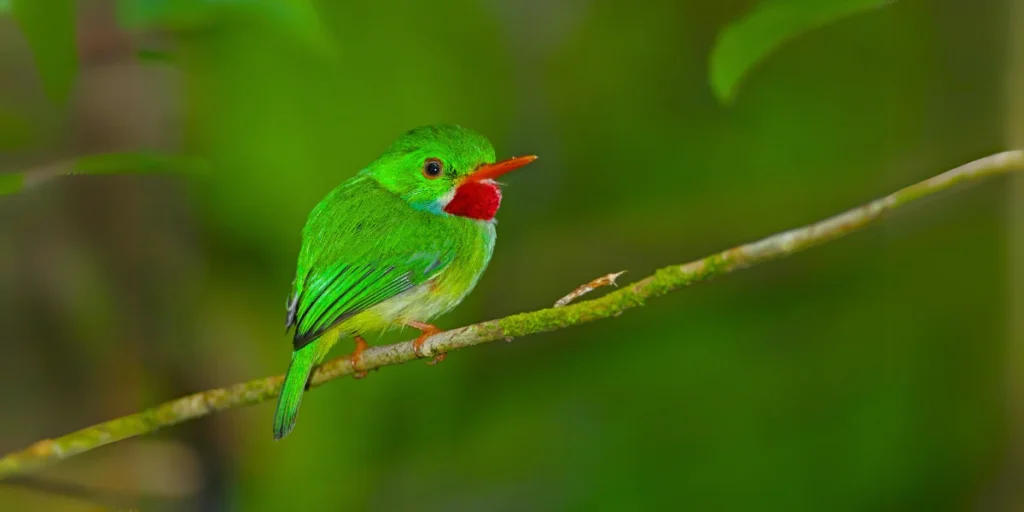
The Jamaican Tody is a tiny, colorful bird that you can only find in Jamaica. It has bright green feathers, a red throat, and blue marks on its wings. This bird eats insects and berries, often flying around trees looking for food. It’s a fun bird to watch because of its bright colors and lively movements.
Bananaquit (Coereba flaveola)
- Size: 4-5 inches
- Habitat: Gardens, fruit orchards, coastal areas
- Diet: Nectar, small insects, fruits
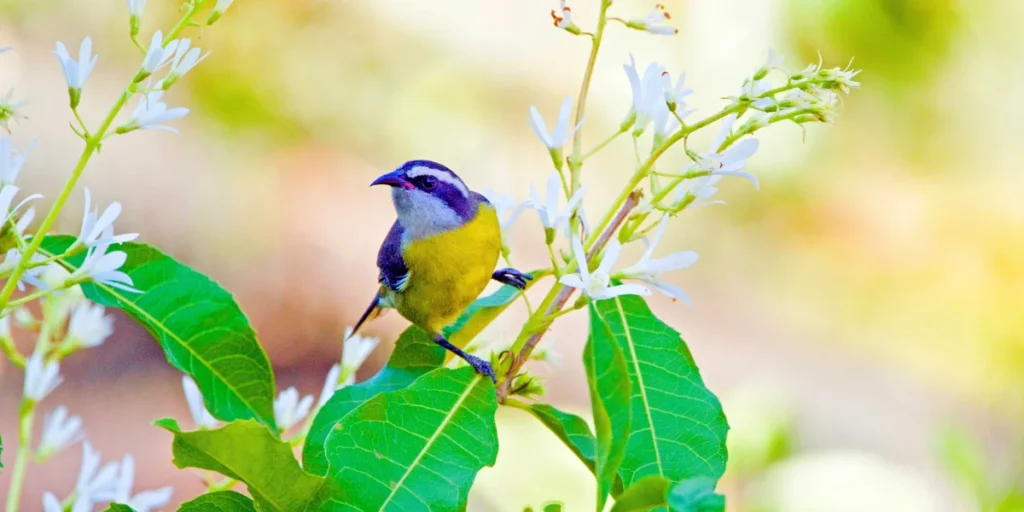
The Bananaquit is a small bird that you will often see in gardens or near fruit trees. It has black, white, and yellow feathers. This bird loves nectar and is often seen flying from one flower to another. Its quick movements and high-pitched song make it easy to spot.
Northern Flicker (Colaptes auratus)
- Size: 12-14 inches
- Habitat: Open woodlands, city areas
- Diet: Ants, beetles, other insects
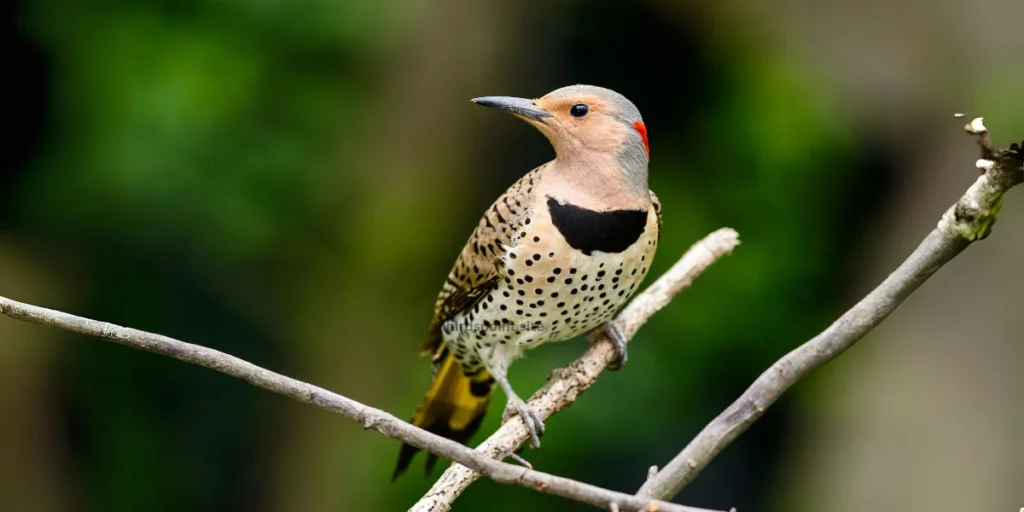
The Northern Flicker is a large woodpecker that can be seen in open woods or city parks. This bird has golden feathers and a loud call. It feeds mostly on ants and beetles, and its golden plumage makes it stand out among the trees.
Rare Birds of Jamaica
Some Jamaican Bird are very rare and hard to find. These birds need special protection because they are endangered.
Jamaican Parrot (Amazona jamaicensis)
- Size: 12-14 inches
- Habitat: Mountain forests, rainforests
- Diet: Fruits, seeds, leaves

The Jamaican Parrot is a colorful bird with green feathers and yellow marks on its head. This bird is very rare and is only found in Jamaica’s mountains. Because of habitat loss and hunting, it is considered endangered. People are working hard to protect this special bird.
Jamaican Blackbird (Nesopsar nigerrimus)
- Size: 10-12 inches
- Habitat: Forests, wetlands
- Diet: Seeds, fruit, insects
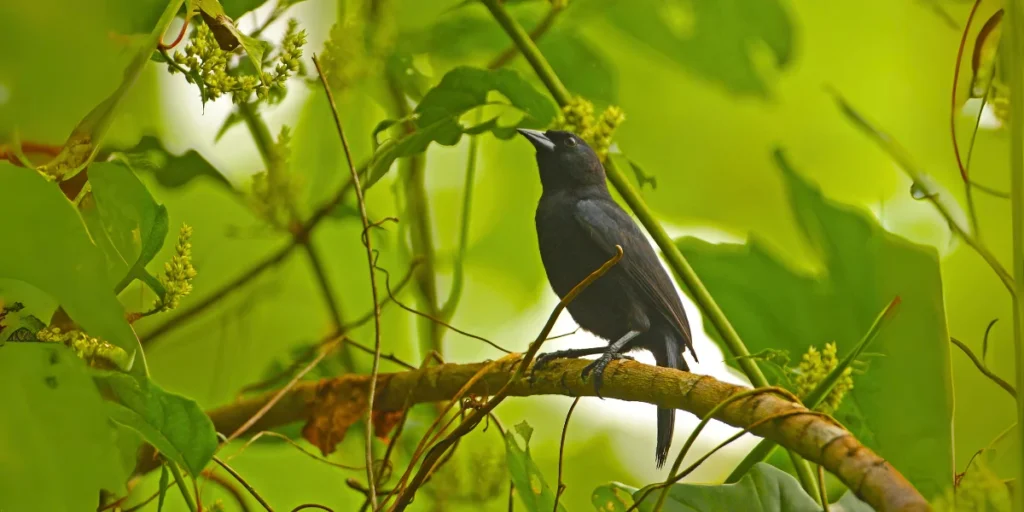
The Jamaican Blackbird is another rare bird, once thought to be extinct. It has dark feathers and makes a beautiful song. This bird lives in forests and marshes, but it is hard to find because there are so few left. It needs protection to survive.
Migratory Birds in Jamaica
Some birds fly from faraway places to Jamaica during certain seasons. They stop here to rest, eat, and stay safe on their long journey.
Common Loon (Gavia immer)
- Size: 28-32 inches
- Habitat: Coastal waters, lakes, rivers
- Diet: Fish, small sea creatures

The Common Loon is a large bird that visits Jamaica during the winter months. It has black-and-white feathers and makes a loud, spooky call. You can often see this bird swimming in lakes or along the coast, diving underwater to catch fish.
West Indian Whistling Duck (Dendrocygna arborea)
- Size: 22-24 inches
- Habitat: Wetlands, lagoons, coastal areas
- Diet: Aquatic plants, seeds, insects
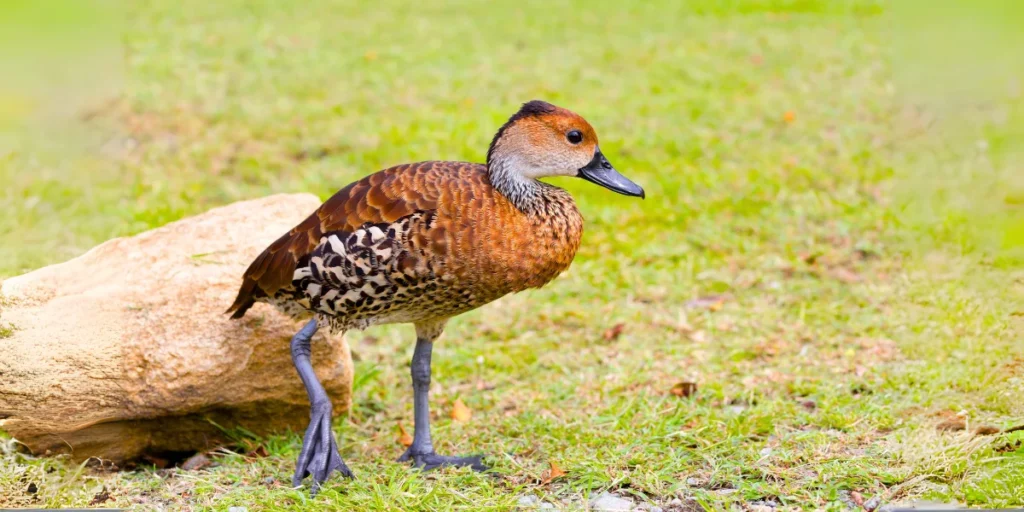
The West Indian Whistling Duck is a migratory bird that comes to Jamaica’s wetlands. This bird has long legs and makes a whistling sound when it calls. You can find it in lagoons or coastal areas, where it feeds on plants and small insects.
Greater Yellowlegs (Tringa melanoleuca)
- Size: 13-15 inches
- Habitat: Coastal marshes, mudflats
- Diet: Insects, small fish
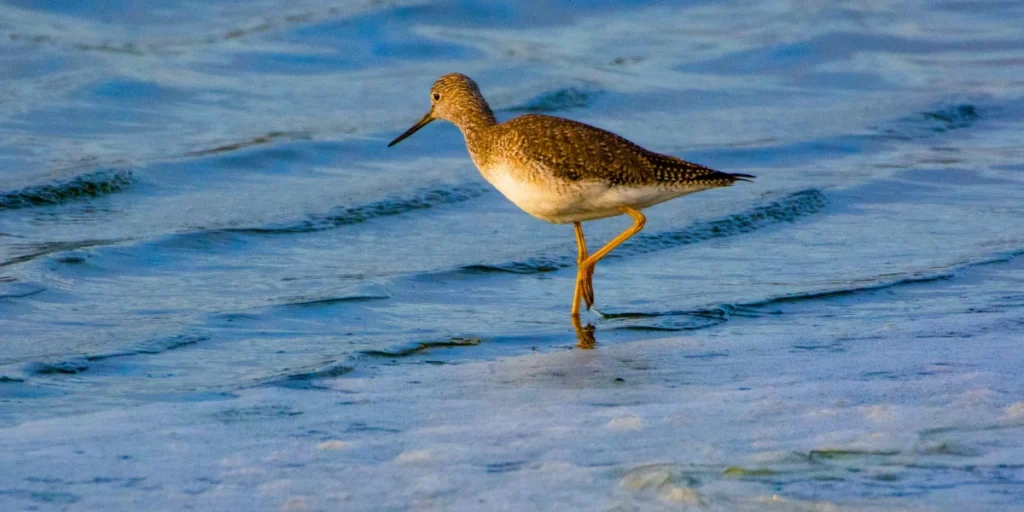
The Greater Yellowlegs is a shorebird that stops in Jamaica during migration. It is easy to spot because of its long yellow legs. It feeds on small fish and insects, usually in shallow waters like marshes or mudflats.
Endemic Birds of Jamaica
Endemic birds are those that can only be found in Jamaica. These birds are very special because they live nowhere else in the world.
Red-billed Streamertail (Trochilus polytmus)
- Size: 4-5 inches
- Habitat: Gardens, forests
- Diet: Nectar, small insects
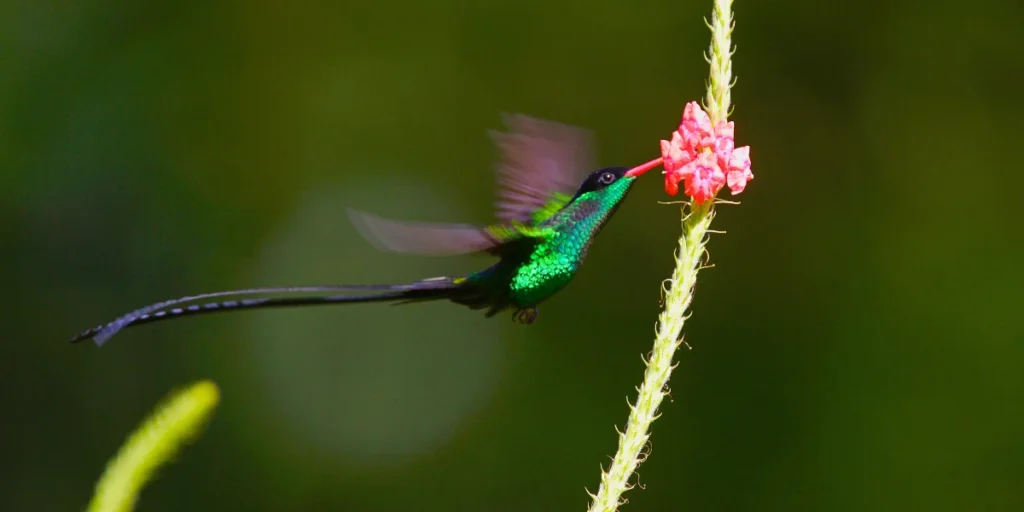
The Red-billed Streamertail, also known as the Doctor Bird, is Jamaica’s national bird. It has shiny green feathers, long tail feathers, and a red bill. This hummingbird is very important for pollinating plants as it flies from flower to flower. The Red-billed Streamertail is loved by Jamaicans for its beauty and significance.
Black-billed Streamertail (Trochilus scitulus)
- Size: 4-5 inches
- Habitat: Tropical gardens, forests
- Diet: Nectar, small insects
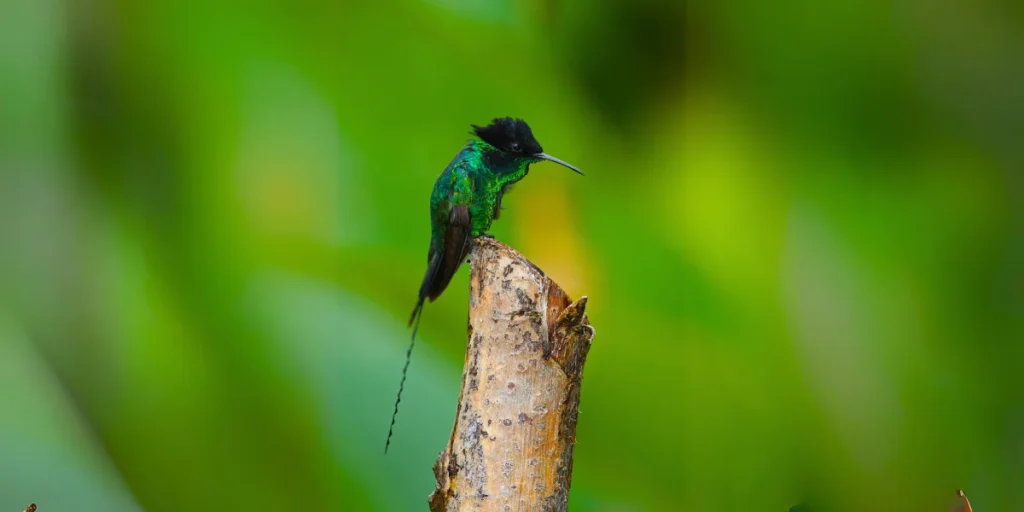
The Black-billed Streamertail is another hummingbird found only in Jamaica. It is similar to the Red-billed Streamertail, but it has a black bill instead of a red one. It is also a beautiful bird that loves to drink nectar from flowers.
White-chinned Thrush (Turdus aurantius)
- Size: 9-10 inches
- Habitat: Forests, shrublands
- Diet: Fruits, insects
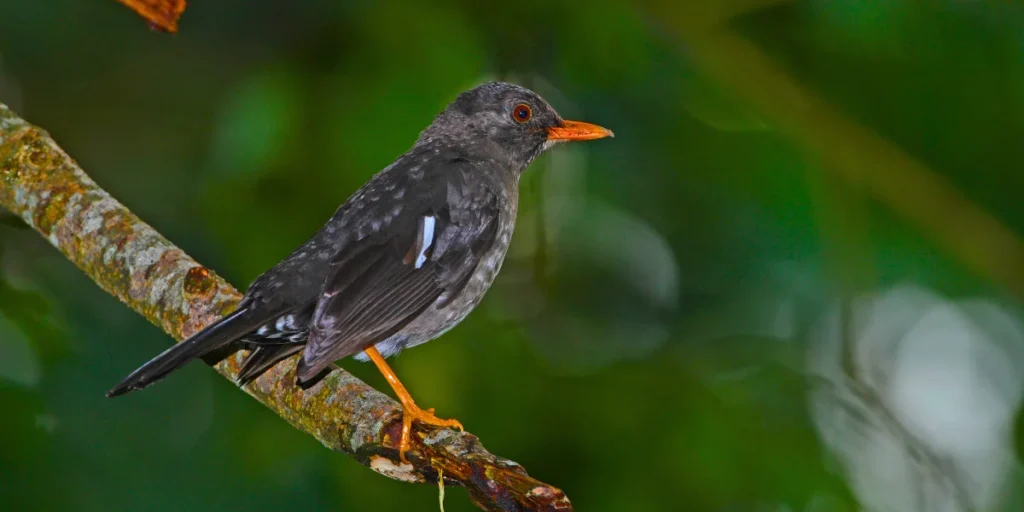
The White-chinned Thrush is another bird that can only be found in Jamaica. It has dark feathers with a white chin and sings a lovely song. This bird eats fruits and insects and can be found in forested areas around the island.
Protecting Birds in Jamaica
Jamaica is home to many beautiful birds, including some that are found nowhere else in the world. Protecting these birds is important to keep their populations healthy and to preserve Jamaica’s natural beauty.
How to Help Protect Birds
- Preserve Natural Habitats
Birds need places like forests, wetlands, and coastal areas to live and find food. Protecting these areas from being cut down or developed helps birds survive. - Avoid Using Pesticides
Chemicals used in gardens or farms can harm birds. Try using natural methods to control pests to keep birds safe. - Support Protected Areas
Some places in Jamaica, like the Blue and John Crow Mountains National Park, are protected to help wildlife, including birds. Visiting and supporting these parks helps conservation efforts. - Keep Cats Indoors
Cats are a big threat to birds, especially small ones. Keeping cats indoors or supervising them outside can prevent them from hunting birds. - Educate Others
Share information with friends and family about why it’s important to protect birds. The more people know, the more they can help.
Why Protecting Birds Matters
Birds play a big role in keeping nature balanced. They control insect populations, pollinate plants, and spread seeds. Protecting them also helps keep Jamaica’s environment healthy for everyone.
By taking small steps, you can make a big difference in protecting the birds that call Jamaica home!
Attracting and Feeding Birds in Jamaica
Many people in Jamaica enjoy birdwatching, and it’s easy to attract birds to your home with a few simple steps.
How to Attract Birds
- Plant Native Plants
Birds love native plants like Hummingbird Sage and Jamaican Cabbage Tree because they provide food and shelter. Planting these can attract more birds to your garden. - Provide Water
Birds need fresh water to drink and bathe. Set up a shallow birdbath and change the water regularly to keep it clean. - Use Bird Feeders
Hanging bird feeders filled with seeds or fruit can attract birds. Different birds like different foods, so try using sunflower seeds, millet, or small pieces of fruit like banana and mango.
What to Feed Birds
- Seeds: Most birds enjoy sunflower seeds and millet.
- Fruit: Birds love slices of banana, mango, and papaya.
- Nectar: Hummingbirds enjoy sugar water (mix 1 part sugar with 4 parts water). Use a special feeder for this.
Tips for Feeding Birds
- Keep Feeders Clean: Wash feeders regularly to avoid spreading diseases.
- Avoid Pesticides: Don’t use chemicals on plants that birds might eat from.
- Feed in Moderation: Give birds just enough food, so they still search for their natural diet.
Feeding birds not only helps them during tough seasons but also brings the joy of birdwatching to your doorstep. It’s a simple way to support wildlife in Jamaica!
Bird Photography Tips in Jamaica
Jamaica is a beautiful place to photograph birds, with its unique species and vibrant landscapes. Here are some easy tips to help you capture amazing bird photos.
1. Use the Right Equipment
- Camera: A camera with a zoom lens (at least 200mm) helps you get clear shots without disturbing the birds.
- Tripod: A tripod keeps your camera steady, especially if you’re using a zoom lens.

2. Find the Best Time
- Birds are most active early in the morning or late in the afternoon. These times also provide soft, natural light for great photos.
- Avoid harsh midday sun, as it can create strong shadows.
3. Be Patient and Quiet
- Birds can be shy and easily scared away. Move slowly and avoid sudden movements.
- Find a good spot and wait quietly. Sometimes, the birds will come to you!
4. Focus on the Eyes
- Try to focus on the bird’s eyes to make your photos look more lively and engaging.
- Use continuous focus mode on your camera if the bird is moving.
5. Use Natural Surroundings
- Look for birds in their natural habitat, like trees, bushes, or near water.
- Photos look more natural when you capture birds surrounded by plants, flowers, or other natural elements.
6. Experiment with Angles
- Take photos from different angles: from below, from the side, or even from behind. This can give your pictures a unique look.
- Try to shoot at the bird’s eye level for the best perspective.
7. Don’t Forget Safety
- Respect the birds and their environment. Don’t get too close or disturb nests.
- Wear comfortable clothing and use insect repellent if you’re shooting in the forest.
By following these simple tips, you can capture stunning photos of Jamaica’s beautiful birds while enjoying the island’s natural beauty. Happy birdwatching and photographing!
Hunting in Jamaica: What You Need to Know
Hunting is a part of Jamaican culture and has been for many years. It is done for different reasons: to gather food, for sport, or as a tradition. However, there are rules and laws in place to make sure hunting is done responsibly and does not harm the environment.
What Types of Hunting Are Common in Jamaica?
- Small Game Hunting
Many people in Jamaica hunt small animals, such as rabbits and mongooses. Some also hunt small birds like doves and quails. This kind of hunting is most common in rural areas. - Sport Hunting
Some people hunt for fun or sport, which usually involves birds like ducks or other small animals. Sport hunting is allowed, but it is controlled by rules to ensure it is safe and fair. - Cultural Tradition
In many rural communities, hunting has been passed down from older generations. It is seen as a way to get food and connect with nature.
Is Hunting Birds Allowed in Jamaica?
Yes, you can hunt certain types of birds in Jamaica, but there are rules. You can hunt birds like doves and quails during specific seasons. However, some birds, especially rare or endangered species, are protected by law. This means that hunting them is illegal. For example, the Jamaican Parrot is a protected bird and cannot be hunted.
Rules About Hunting in Jamaica
- Hunting Seasons
There are certain times of the year when hunting is allowed. These seasons help to protect animals during their breeding periods, making sure that they can reproduce and keep their populations strong. - Permits and Licenses
If you want to hunt in Jamaica, you need to have a hunting permit. This is to make sure hunting is done legally and responsibly. - Protected Species
Some animals and birds are not allowed to be hunted because they are endangered or rare. For example, birds like the Jamaican Parrot are protected, and hunting them is against the law.
Why Are There Hunting Rules?
The rules and laws about hunting are in place to protect Jamaica’s wildlife. Without these protections, some animals could disappear, and the natural environment could be damaged. By following the rules, hunters can help ensure that Jamaica’s wildlife stays healthy and strong for future generations.
Final Thoughts on the Birds of Jamaica
Jamaica is truly a haven for bird lovers, with its wide variety of both native and migratory species. From the vibrant colors of the Streamertail Hummingbird to the unique calls of the Jamaican Oriole, the island is rich in avian diversity. Protecting these birds and their natural habitats is vital to preserving Jamaica’s ecological balance and natural beauty. Simple efforts, like planting native trees, using bird feeders, or supporting conservation areas, can go a long way in ensuring these birds continue to thrive.
For birdwatchers and nature enthusiasts, Jamaica offers a rewarding experience filled with rare sights and sounds. Whether you’re interested in capturing stunning bird photos or simply observing these incredible creatures, there are countless opportunities to connect with nature on this beautiful island. By taking steps to protect and cherish the birds of Jamaica, we contribute to the island’s vibrant ecosystem and keep its natural heritage alive for generations to come.
FAQs
- What is the national bird of Jamaica?
The national bird is the Streamertail Hummingbird, also known as the Doctor Bird. - Can you hunt birds in Jamaica?
No, hunting birds is restricted. Many species are protected to preserve Jamaica’s wildlife. - When is the best time for birdwatching in Jamaica?
Early mornings and late afternoons are the best times, especially during the cooler months of November to April. - What should I feed birds in Jamaica?
Birds enjoy seeds, fruits like banana and mango, and nectar. Make sure to use clean feeders. - How can I attract birds to my garden?
Plant native trees, set up bird feeders, and provide fresh water to attract birds. - Are there migratory birds in Jamaica?
Yes, Jamaica hosts many migratory birds, especially during the winter months. - Is bird photography popular in Jamaica?
Yes, bird photography is popular due to the island’s unique and colorful bird species. - What are some common birds found in Jamaica?
Jamaican Tody, Yellow-billed Parrot, Bananaquit, and Northern Mockingbird are commonly seen.

1 thought on “Birds in Jamaica: Details, List & Photos”